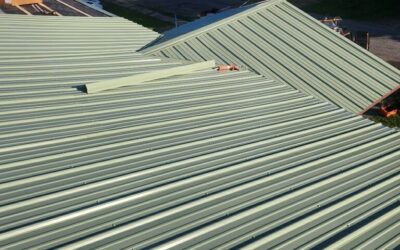Replacing a roof is a significant undertaking that varies in duration based on several factors, including the size and complexity of the roof, chosen materials, weather conditions, and the efficiency of the roofing crew. Understanding the typical timeline and the elements that influence it can help homeowners plan effectively and set realistic expectations
🏠 Typical Roof Replacement Timeline
⏱️ Average Duration
For an average-sized home with a straightforward roof design, the replacement process typically takes 1 to 3 days. This estimate assumes favorable weather conditions and the use of common materials like asphalt shingles.
🗓️ Full Project Timeline
While the physical replacement might span a few days, the entire project—from initial inspection to final cleanup—can extend over 2 to 3 weeks. This includes time for obtaining permits, scheduling, and any unforeseen delays.
🔍 Factors Influencing Roof Replacement Duration
1. Roof Size and Complexity
- Size: Larger roofs naturally require more time. A small roof (~1,000 sq ft) might be completed in a day, whereas larger roofs (3,000+ sq ft) can take several days.
- Complexity: Roofs with steep pitches, multiple facets, dormers, skylights, or chimneys add to the complexity, increasing the time required for replacement.
2. Type of Roofing Material
Different materials have varying installation times:
- Asphalt Shingles: 1–3 days(
- Wood Shakes: 2–8 days
- Slate Tiles: 6–7 days
- Metal Roofing: 2–4 days
- Concrete Tiles: 8–9 days
3. Weather Conditions
Weather plays a crucial role. Rain, snow, or extreme temperatures can delay the project due to safety concerns and material performance issues. For instance, asphalt shingles require temperatures above 40°F for proper sealing.
4. Existing Roof Condition
If the existing roof has multiple layers or underlying damage (like rot or mold), additional time is needed for removal and repairs before installing the new roof.
5. Permits and Inspections
Securing necessary permits and scheduling inspections can add to the timeline, depending on local regulations and the efficiency of the permitting process.
6. Crew Size and Efficiency
The size and experience of the roofing crew impact the project’s duration. A well-coordinated team can expedite the process, whereas smaller or less experienced crews might take longer.
🛠️ Roof Replacement Process Breakdown
- Initial Inspection and Planning (1–2 weeks): Assessment of the existing roof, selection of materials, obtaining permits, and scheduling.
- Removal of Old Roofing (1–2 days): Stripping off existing materials and inspecting the underlying structure.
- Installation of New Roofing (1–7 days): Laying down underlayment, installing new roofing materials, and ensuring proper sealing and ventilation.
- Cleanup and Final Inspection (1 day): Removing debris, ensuring all nails and materials are cleared, and conducting a final walkthrough.
📍 Roof Replacement in Ohio
In Ohio, roof replacements typically take 1 to 14 days, influenced by factors like roof size, material choice, weather conditions, and contractor efficiency. Given Ohio’s variable climate, scheduling during late spring to early fall is advisable to minimize weather-related delays.
✅ Tips for a Smooth Roof Replacement
- Plan Ahead: Schedule your project during seasons with predictable weather.
- Choose Experienced Contractors: Research and select reputable roofing companies with positive reviews.
- Understand Your Contract: Ensure all aspects of the project, including timelines and materials, are clearly outlined.
- Prepare Your Property: Clear the area around your home to provide easy access for workers and equipment.
By understanding the factors that influence roof replacement timelines and preparing accordingly, homeowners can ensure a smoother, more efficient roofing project.
 (440) 307-2060
(440) 307-2060




